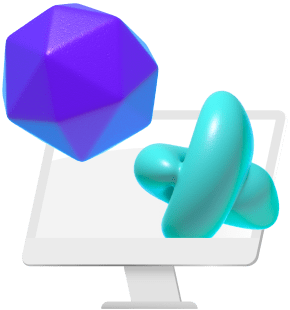As technology evolves, so does the bar raise that much higher for visual representation techniques. Industry professionals can tell you that nowadays, a good, accurate 3D rendered representation of a product, design or virtual environment is the bare minimum for most clients.
It’s almost absurd to think of the cost of a single rendered image costing hundreds to even thousands of dollars. But factor in the hours it takes to model the image, set it up, and then render it accurately and you’ll start to realize why the labor behind the image costs so much.
For the people setting up the render, the last part of that process - the 3D rendering - is arguably the one that requires the most computer power and resources. And to finish the process in a reasonable amount of time, an appropriate 3D render engine is absolutely crucial.
In this article, we’ll take a look at the top 3D rendering engines available in the market, their pros and cons, and which one of them is best for your needs.
V-Ray
Chaos Group’s V-Ray Collection is considered by many the golden standard for CGI, 3D rendering, and simulation software. It’s frequently used by AEC and Design professionals. Currently, V-Ray has products that service several 3D modeling programs, including 3ds Max, SketchUp, Revit, Unreal, and even Blender.
Chaos Group also has a V-Ray Collection package that has all of the available V-Ray products for users who use more than just one 3D program in their workflow. Their website currently values that package at 699 USD a year. It requires 8-18 GB of RAM, a processor with SSE4.2 support (X64), and 2-12 GB of hard disk space.

Advantages: V-Ray is known to have the most available technical options when it comes to tweaking specific details of renders. Professionals use V-Ray for the amount of versatility that the software affords them.
Disadvantages: Precisely because of all the settings that V-Ray has, some users feel that the program is a little too complicated or intimidating to use.
Blender Cycles
Blender is an open-source 3D modeling and animation program frequently used by animators, VFX artists, 3D printers, and video game professionals. It’s also popularly used for 3D animation and CGI works. It has a built-in rendering engine called Cycles. Its ease of use and flexibility as a program rivals even the top paid 3D rendering programs. As part of the Blender package, Blender Cycles is totally free to download and use. It requires a 64-bit quad-core CPU with SSE2 support, 8 GB RAM, and a graphics card with 2 GB RAM, OpenGL 4.3.
Advantages: Blender Cycles’ biggest draw is its accessibility. As Blender is free and open-source, any aspiring 3D artists and smaller start-up studios can use the program for various projects.
Disadvantages: The learning curve of the software is a tad steep for complete beginners. And to really optimize the use of Blender, users would often need third-party plug-ins installed.
Enscape
Enscape is a relatively new commercial 3D rendering program and plug-in. Despite just being released back in 2015, it has quickly gained traction in the AEC industry as one of the top real-time rendering and virtual reality tools available in the market. Its usability is top-notch and its settings and tools are robust.
As a 3D Render Engine plugin, it can integrate with Revit, SketchUp, Rhinoceros, ArchiCAD, and Vectorworks. Its single-user license is valued at 478.80 USD a year while its floating license costs 814.80 USD. To function, Enscape requires an NVIDIA or AMD dedicated GPU with 4-8 GB VRAM.

Advantages:
For the amount of detail you can tweak on 3D renders, Enscape is still relatively easy to use and get used to. And since it uses real-time rendering, any changes can be seen immediately when tweaking the settings.
Disadvantages:
Since the company is relatively new, some features do still need to be worked on, such as its lack of Mac support.
Kerkythea
Kerkythea is a full standalone program that can handle raytracing which is handy for photorealistic 3D renders. Kerkythea is available on Windows, MacOSX, and Linux and is distributed as freeware.
Kerkythea can handle files from Blender, 3ds Max, Maya, GMax, and SketchUp. Kerykythea’s system requirements include As a relatively simple rendering software, Kerkythes doesn’t have many limits when it comes to system requirements.

Advantages:
Its accessibility and intuitive controls make it perfect for any user who wants a fast, simple, but still accurate rendering experience.
Disadvantages:
The program does receive complaints of laggy load times and inconvenient default program settings.
Lumion
Lumion is a standalone rendering program specifically catered to architectural visualizations. As a rendering software, it’s specifically geared towards 3D renders of architectural designs. It was set up back in 2010 by Act-3D B.V.
It currently has compatibility support with the top 3D modeling programs available: SketchUp, Revit, ArchiCAD, Vectorworks, and 3ds Max, among others. Its minimum hardware requirements include graphics cards with 4-11 GB of VRAM, higher-end Intel, and AMD CPUs, and 16-64 GB of RAM.
Advantages:
The program is optimized for architectural visualization. As such, architectural designers will find the software easy to use.
Disadvantages:
Not intended to be used outside of its scope of architectural visualization and so lack some more advanced rendering features.
Conclusion and An Alternative
Although the five rendering engines mentioned all work as 3D rendering tools, they all have their own brand-specific key features that differentiate them from one another. Depending on your needs as a professional, one of these options might be better for you than the rest. So be sure to weigh your options carefully and consider the type of rendering program you need for your workflow.

Despite their differences though, top-end rendering programs all need one factor to make sure they produce good results - high-end machines that can handle all the visual computational power needed. An alternative to using these machines could be cloud computing services like Vagon.
You get the same level of high-end computer performance from any machine with an internet connection at a fraction of the cost of purchasing a desktop.
Interested in learning more? Check out Vagon today!




